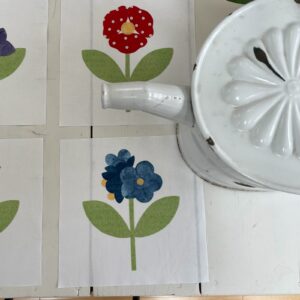by Great Joy Studio | Aug 24, 2020 | Quilting & Fabric
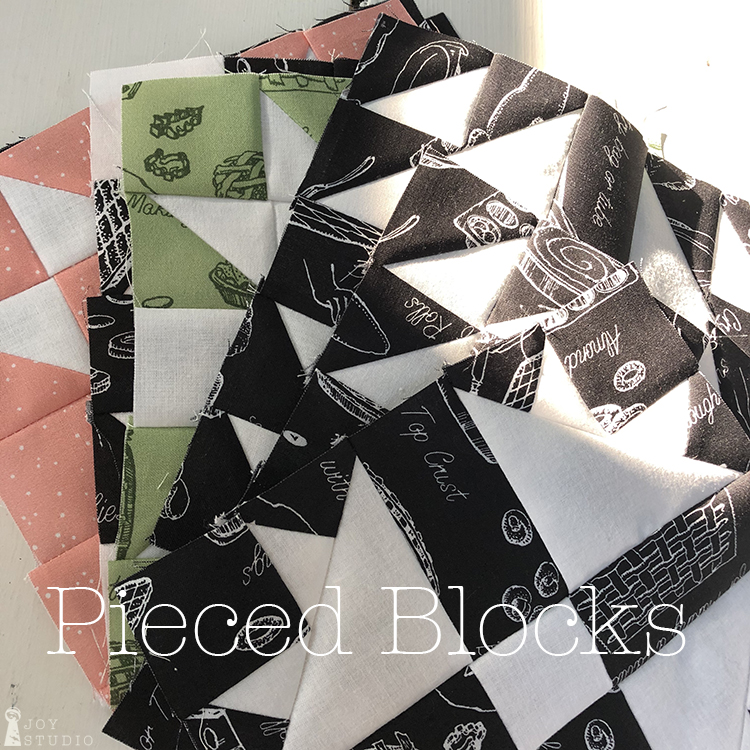
Continued
•
Hello!
Pieced blocks, continued.
How is everyone doing so far?
I am happy to report that our piecing portion of our quilt is complete! Whew!!
•
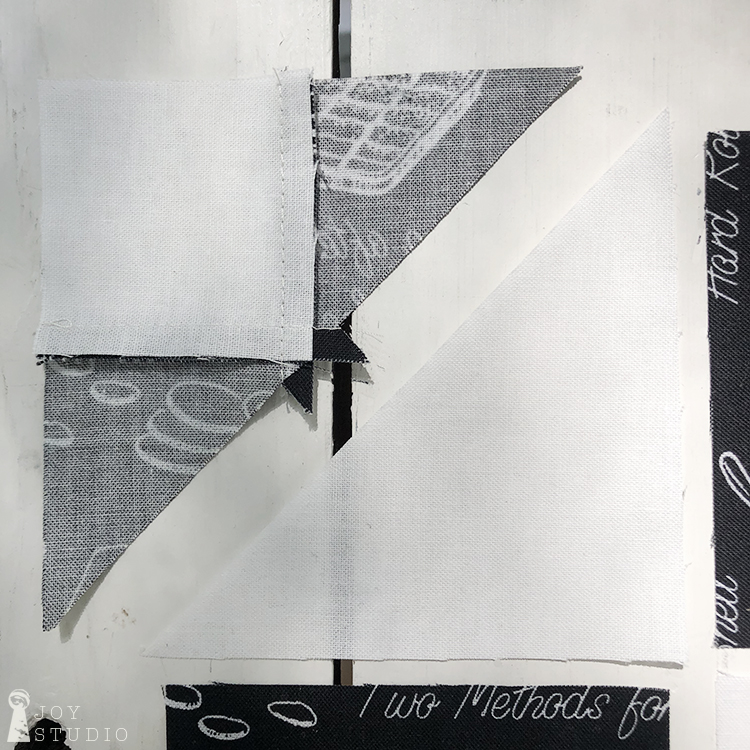

A couple of items I should have mentioned earlier, pressing your seams. Always press as you go is highly recommended for a neat job and press the seams toward the darker fabric whenever possible.
•
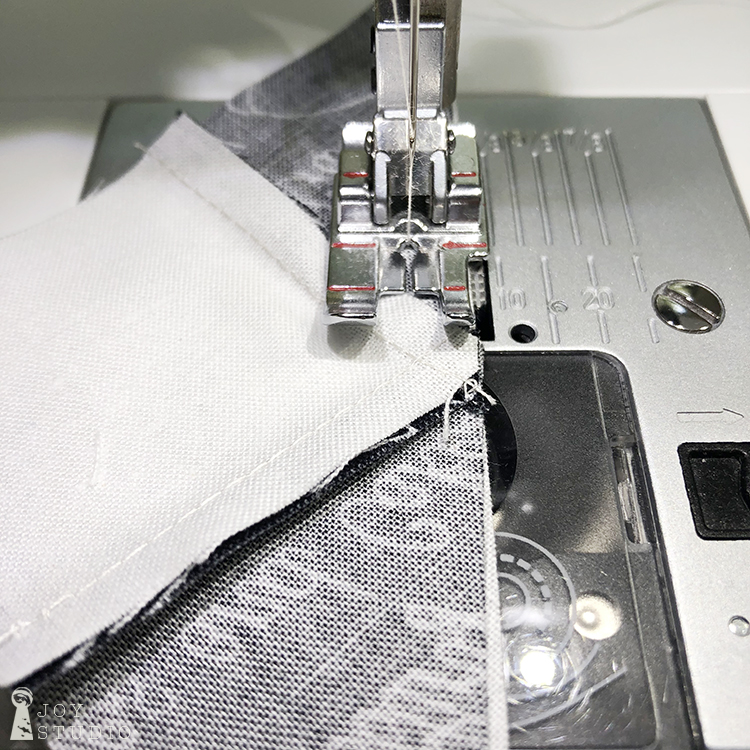
And something I learned along the way to get my points closer to each other. Sew on the side that allows you to see your seam and stitch right across that. Who knew, not me. 😉
Below are the last four blocks that I saved until last. They appeared a bit more unfamiliar to me because of the corners which are all similar, and on an angle. However, following the sequence on the Pieced Blocks Guide in the pattern, I could quickly see that there was little to no difference in difficulty and all went smoothly as the others.
I think these are my best blocks to date! Perhaps I’m getting better the more I make.
In each block I did the corner work first. Once that was done, I attached pieces in the same sequence as all of the other blocks from Thursday’s post, horizontal rows. Last I attached the three horizontal rows from top to bottom, to complete.
Our gallery.
•

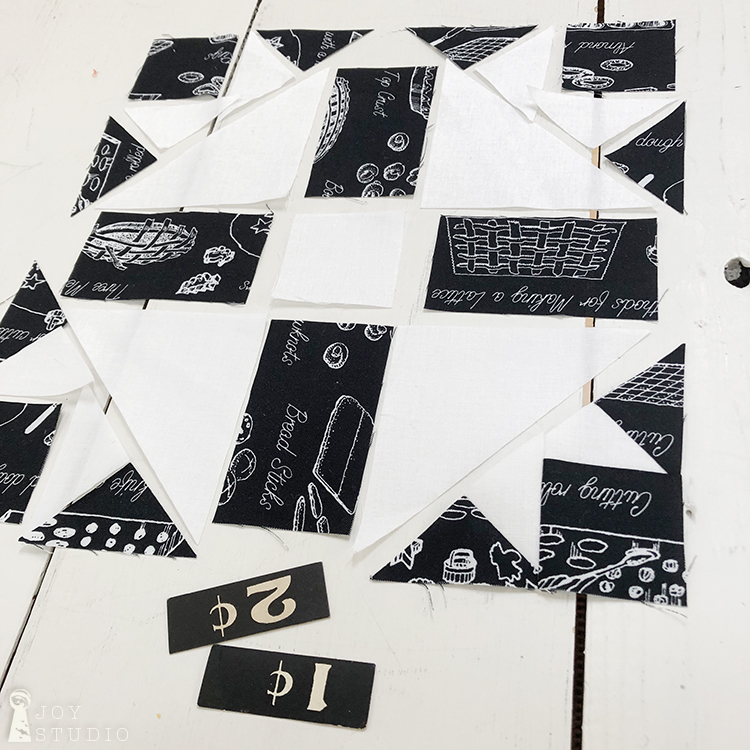
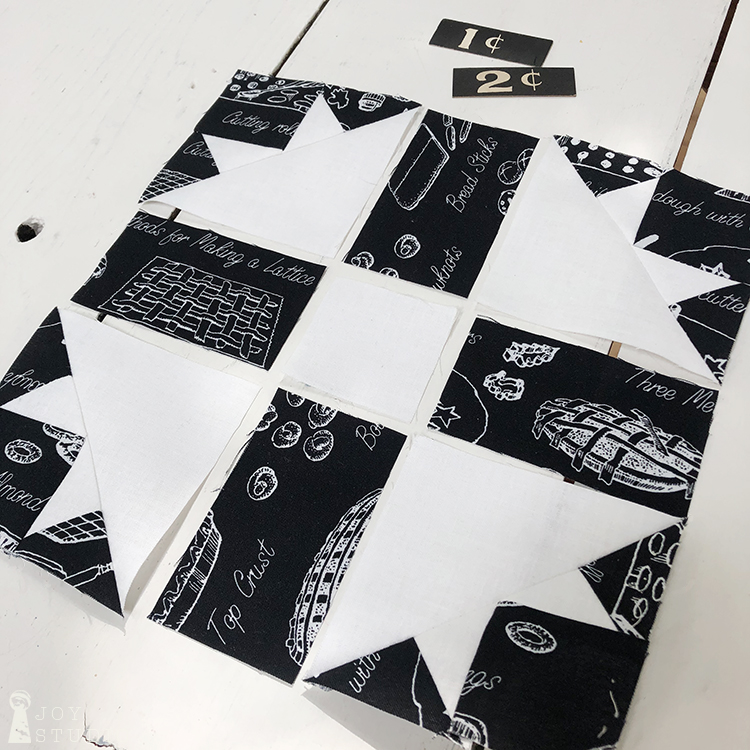
Row 1, block 2.
•
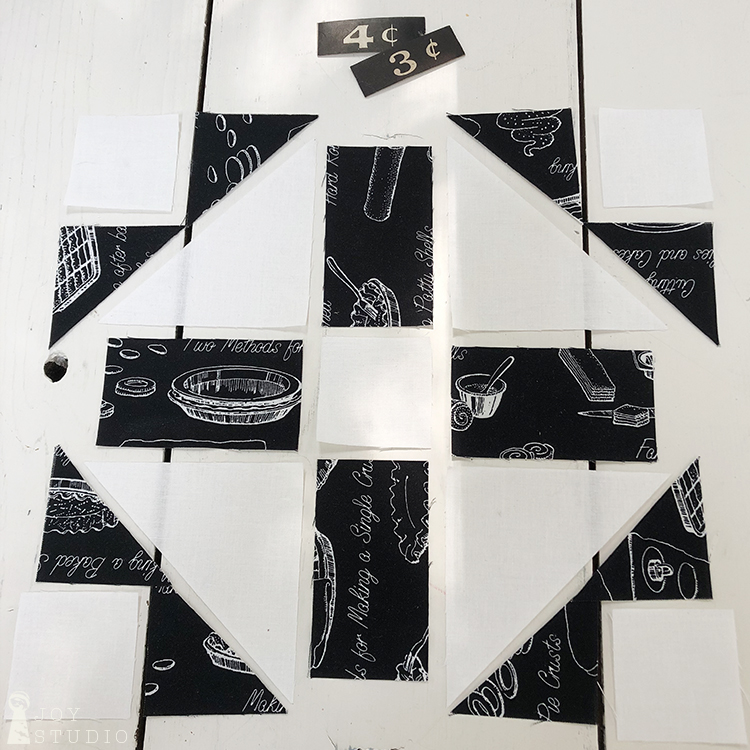
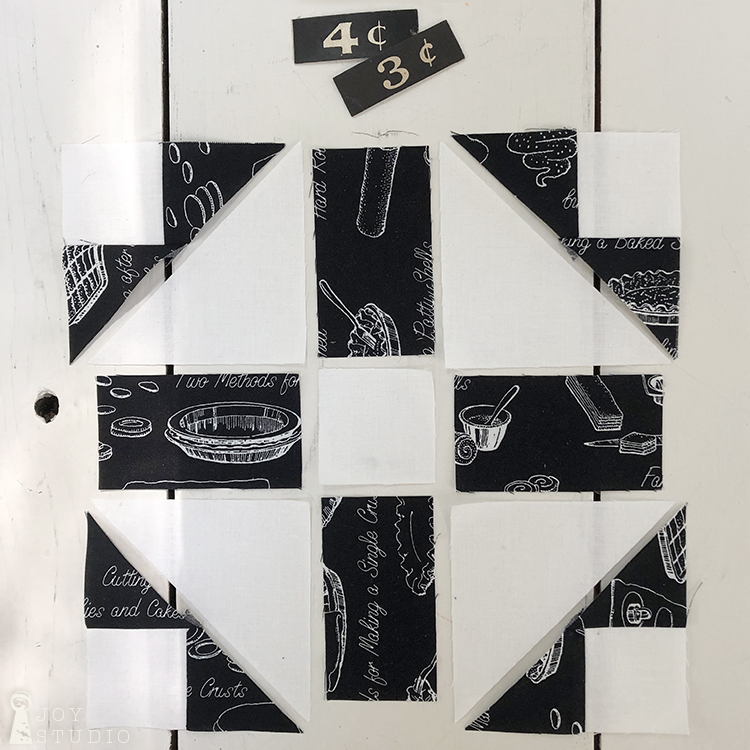
Row 4, block 3.
•

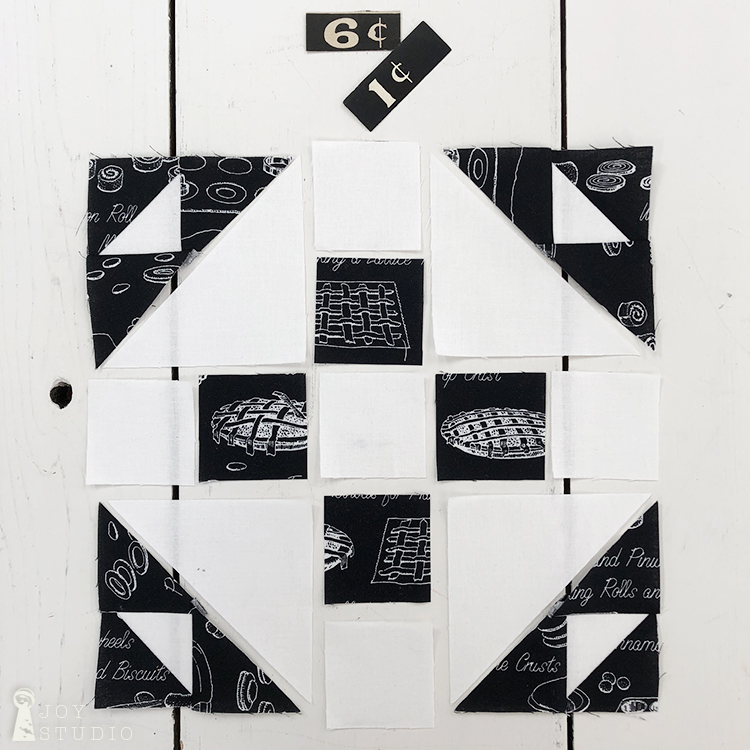
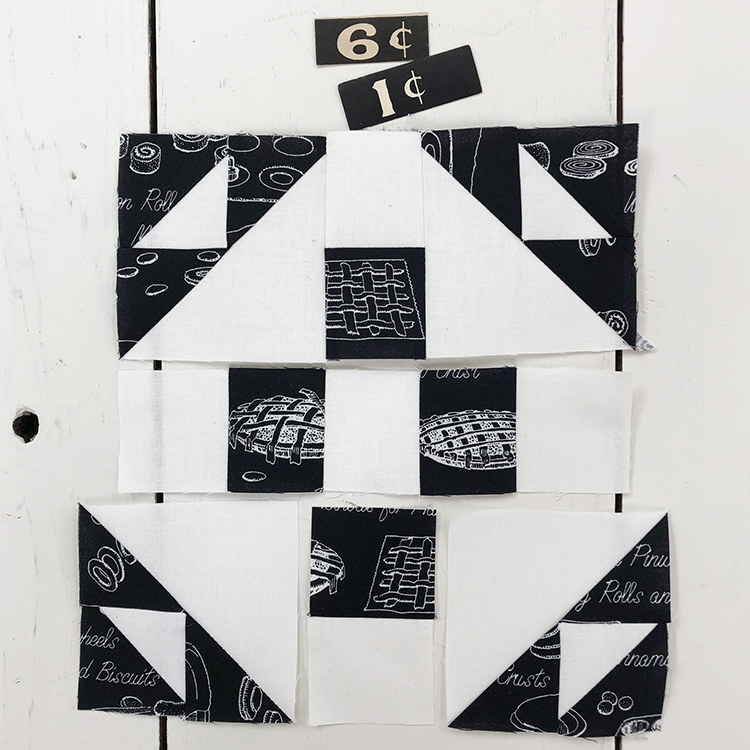

Row 6, block 1.
•
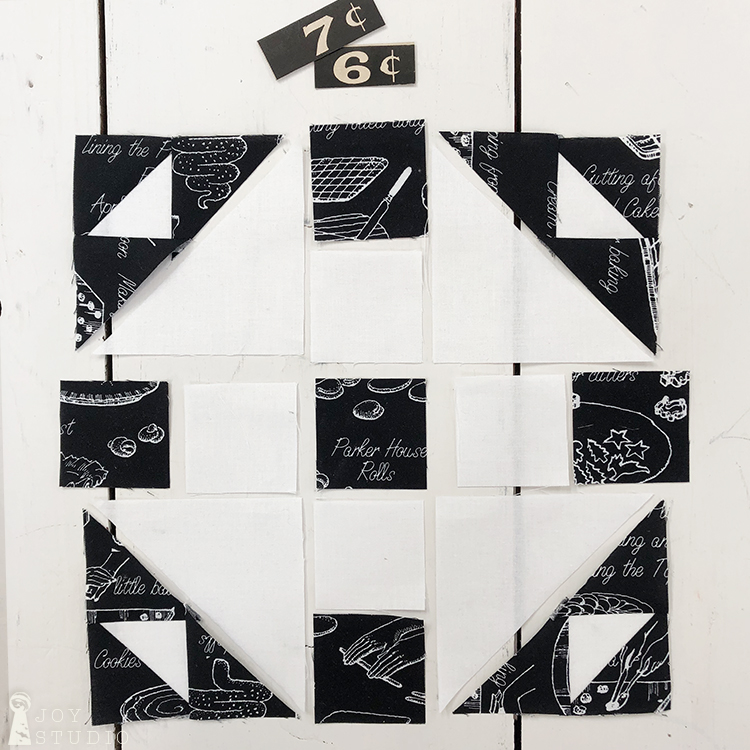

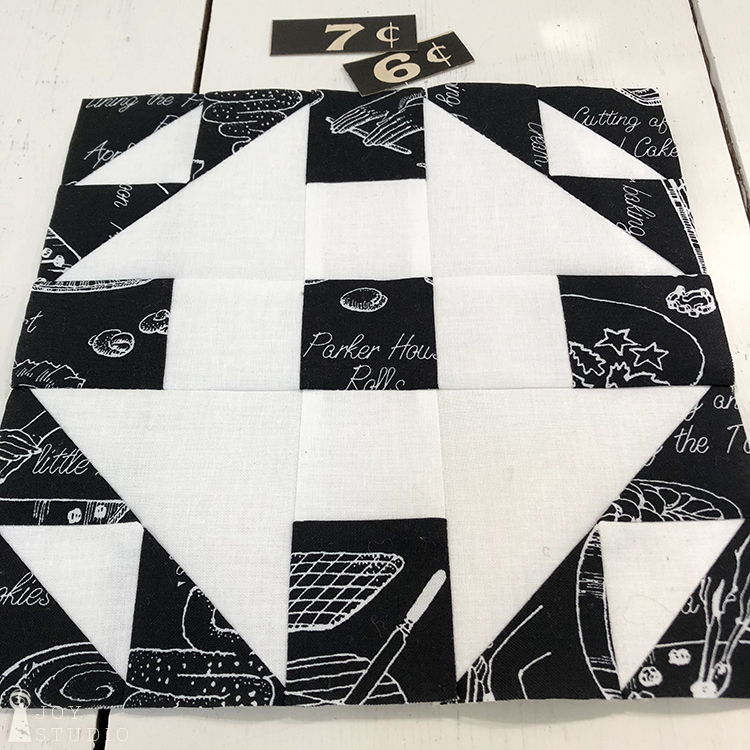
Row 7, block 6.
•
Trimming.
•
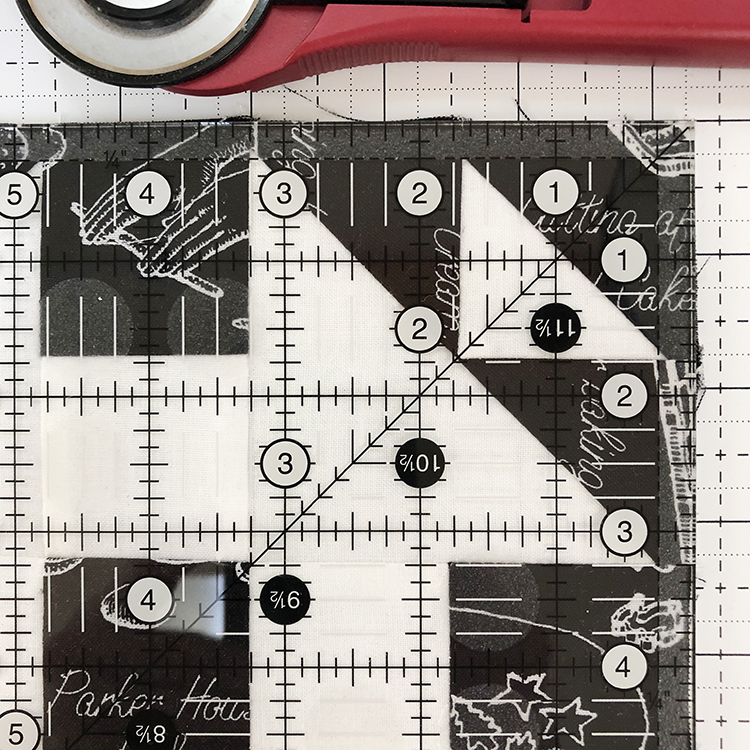
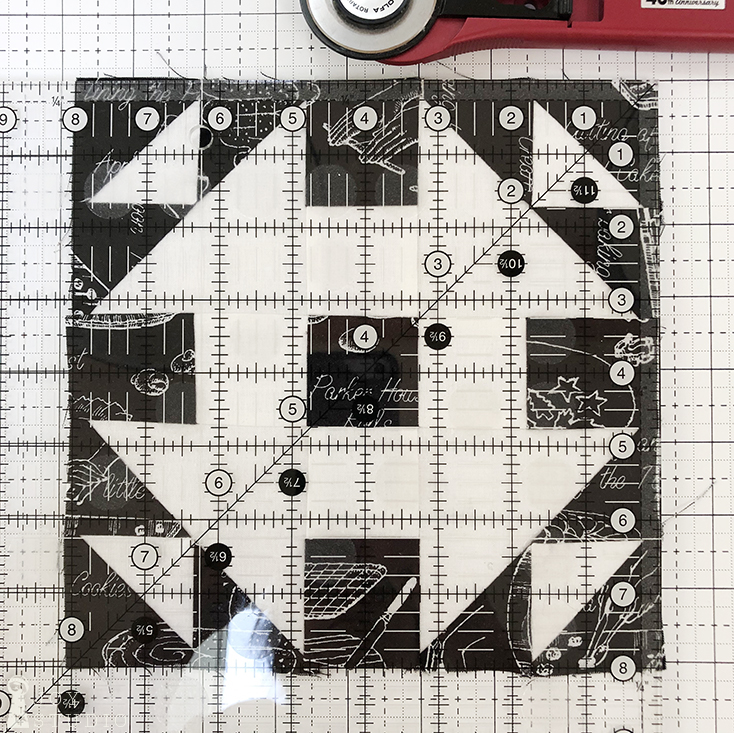
•
Trim each to eight inches, square for your seven and a half finish size blocks. In most cases ours only needed a smidgen cut off to clean up and even each block.
Again, voila!!
I feel quite accomplished or should I say quilt, and I hope you do too.
•
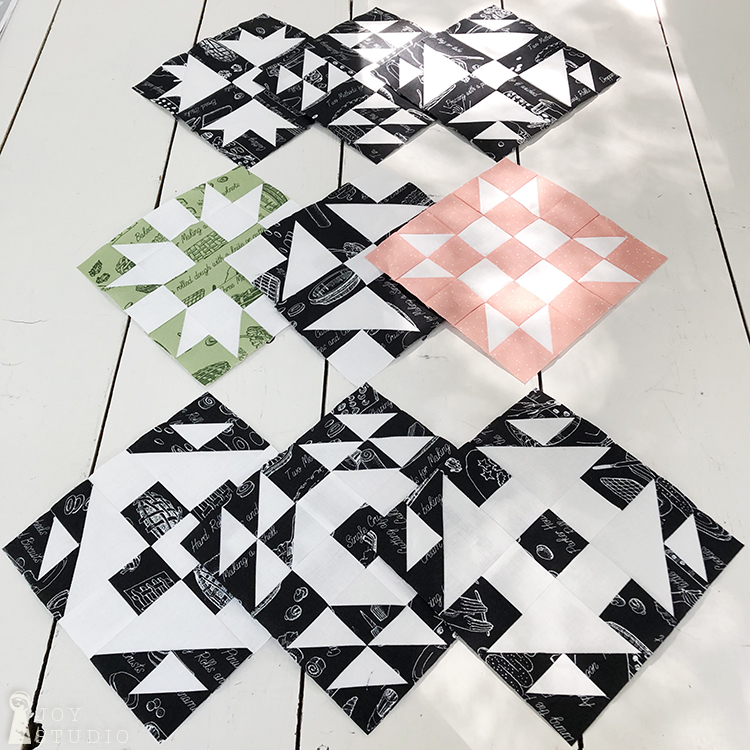

•
Again, share, share, share:
When posting photos use #snowalong and #snowsweetfabric in your social media so we can find/see your progress.
Let us know if you post on Pinterest as well and we’ll add to our board.
•
We’re loving the Snow Sweet fabrics from Riley Blake Designs!
Aren’t they beautiful?!
See you Thursday when this quilt will come together.
by Great Joy Studio | Aug 12, 2020 | Quilting & Fabric
Hi Again!
How’s everyone doing with their Snow-A-Long quilt?
Have everything fused?
*

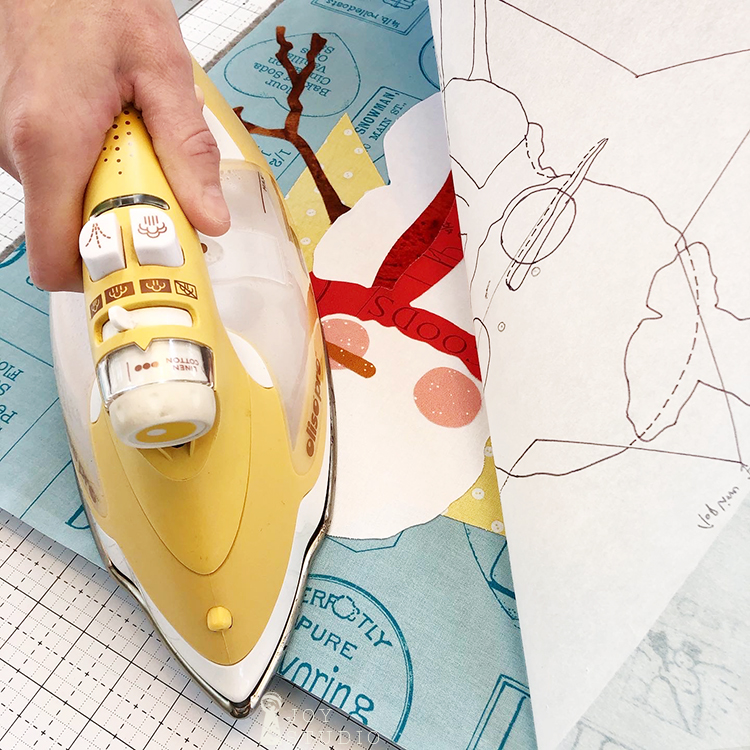
*
Sew far, sew good I hope.
Speaking of sewing, here is where it gets tricky for me!! I soar at drawing and cutting but sewing makes me a bit nervous, still.
This week we are
securing/stitching
your raw edge appliqué pieces down and
trimming
the blocks. You can also do any additional decorative stitching or embroidering at this time. Decorative stitch guidelines are provided on your patterns. Although the fabrics do much of the work in this quilt, the gingerbread blocks are perfect candidates for some fancy thread work either by hand or machine.
*
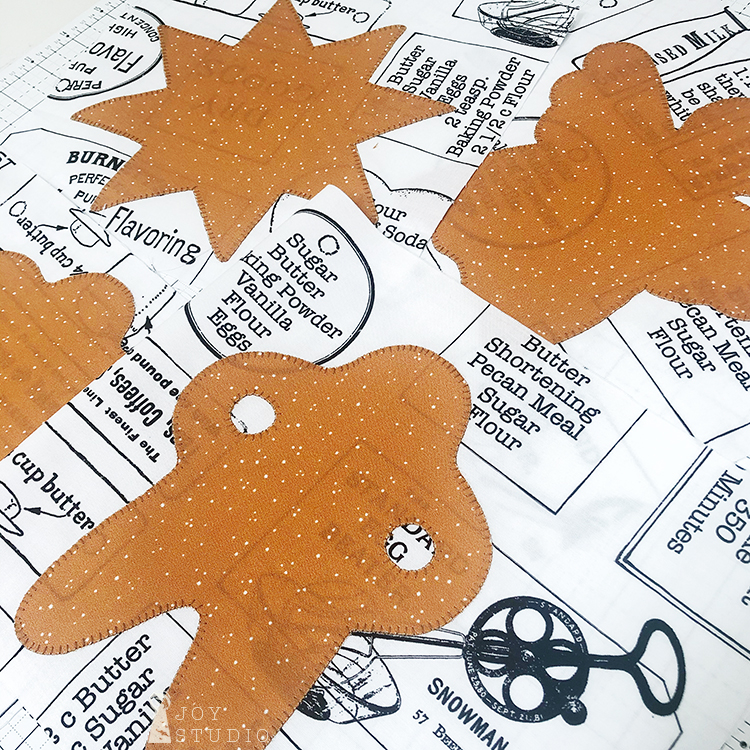
*
I have several photos that will show you our sewing process. I used a blanket style stitch (under the quilting stitch guide on my machine) for the edges. That is the one I am most comfortable using with my skill level but feel free to choose any that you like. I am certain that all of you have more sewing experience than myself so I look forward to seeing and/or hearing about your personal choices for this step. My understanding is that with raw edge appliqué you want a stitch that will help to keep the edges from fraying should the fusible product let loose with washings and use. However, I’m seeing the trends for raw edge appliqué and looks like anything (personal preference) goes!! And I like that.
Please #snowalong and #snowsweetfabric progress photos on social media so we can find and add to our
Pinterest board!
*

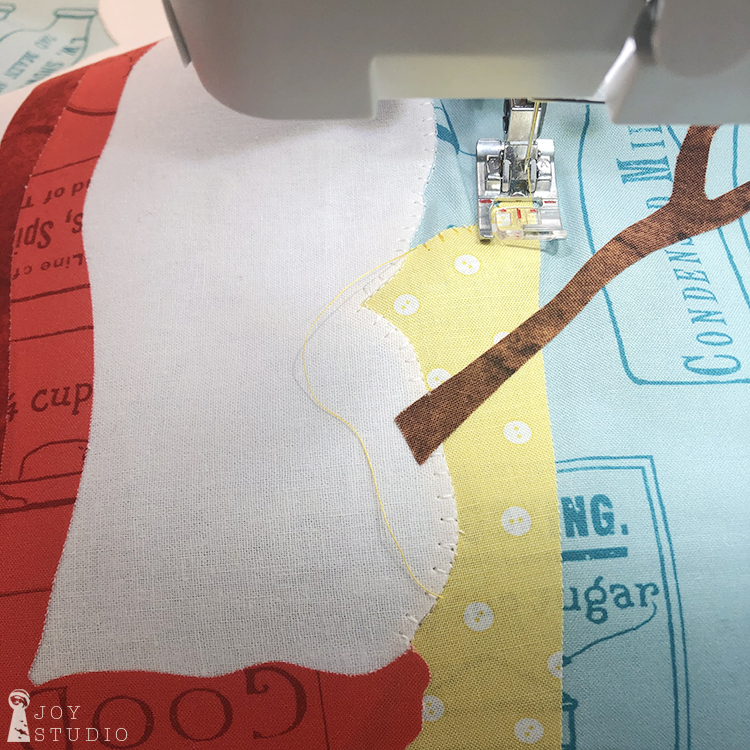
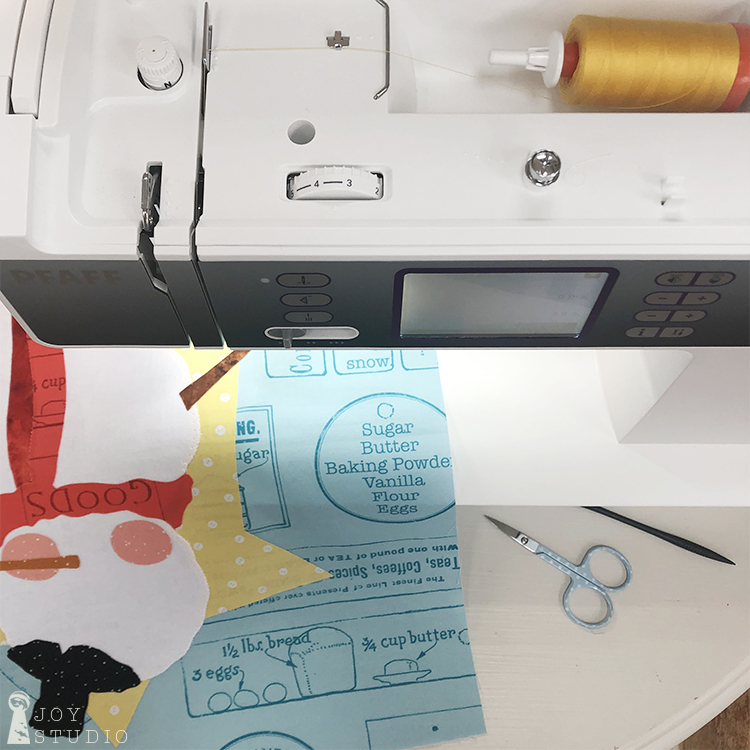
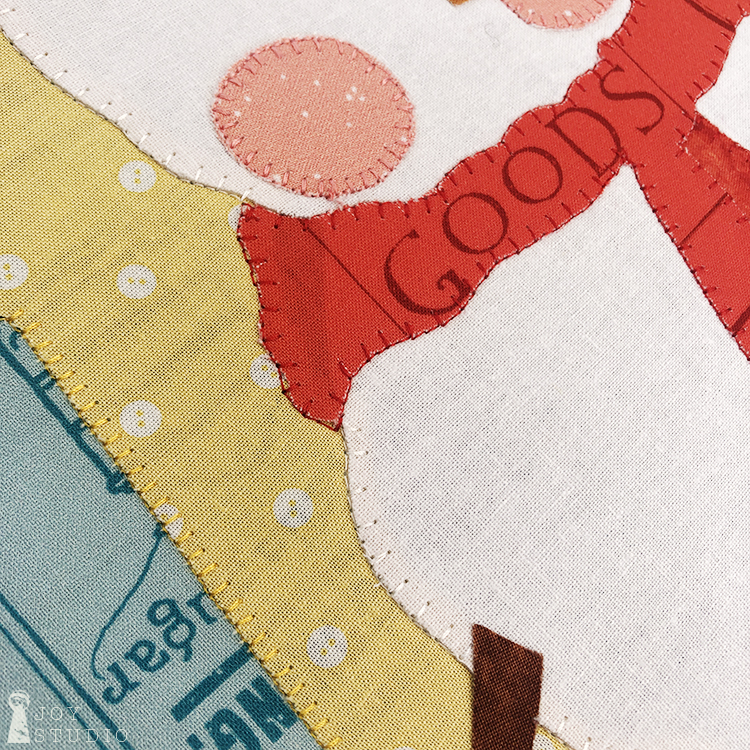
*
I also chose to use the same thread color as my appliqué fabrics. Again this was to better blend in and hide any of my stitching errors. If you want the appliqué art to stand out more you may want to try black and possibly some sketchy free motion which I love and hope to learn some day. I used Aurifil cotton 50 wt thread for all appliqué sewing.
•
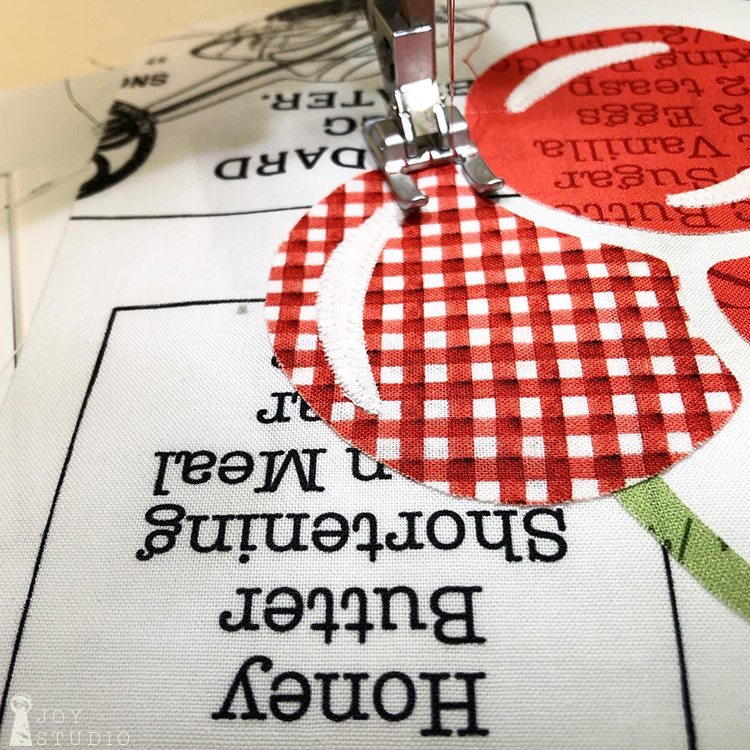

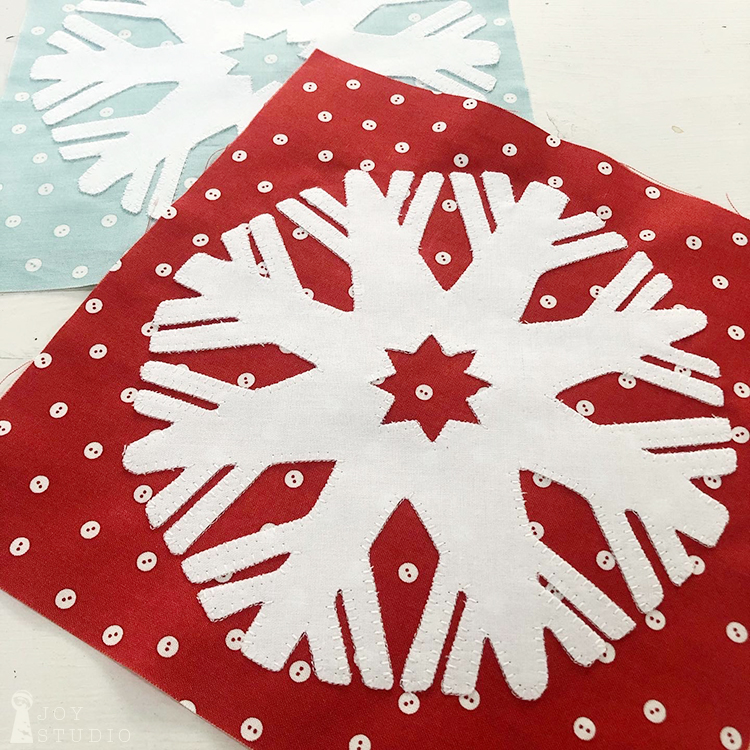
•
With so many blocks to stitch down, I did all of the white first, then black, red, and so on. Soon you will have them all finished.
*


*
Time to trim.
This is done after the stitching to allow for any shrinkage that possibly took place. Be sure to leave yourself a quarter of an inch for a seam allowance on all four sides of each block finish size. Block finish sizes are stated on your pattern. Some images like the gingerbread house is intended to sit on the bottom seam line of the block. So I trimmed to the one quarter inch mark at bottom and sides.
•


•
Once all are trimmed, post on your design wall and enjoy seeing your quilt come together!
I love that part.
And I love this Snow Sweet collection from Riley Blake Designs!
Widely available in shops now, but it’s going fast.
•
See you next Thursday.
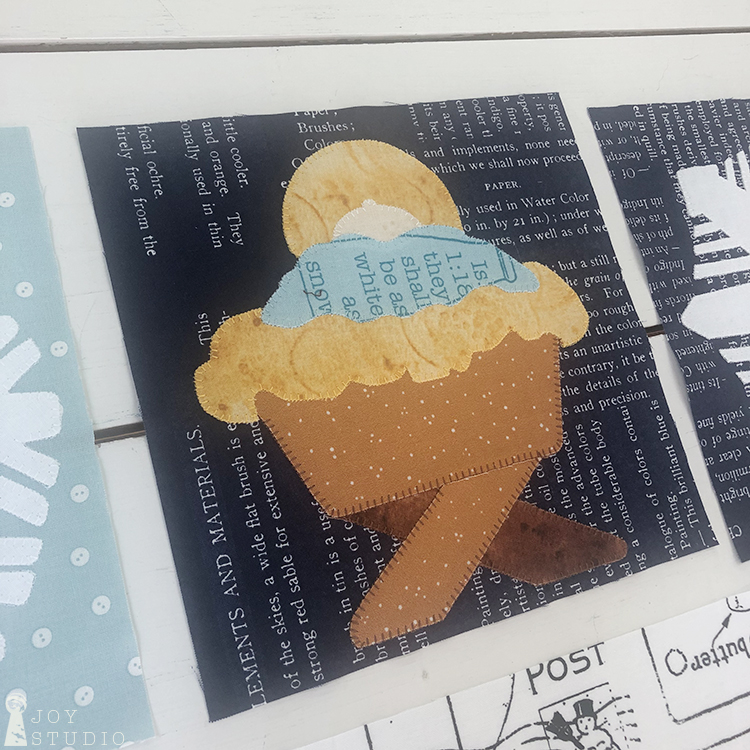
by Great Joy Studio | Jul 2, 2020 | Quilting & Fabric
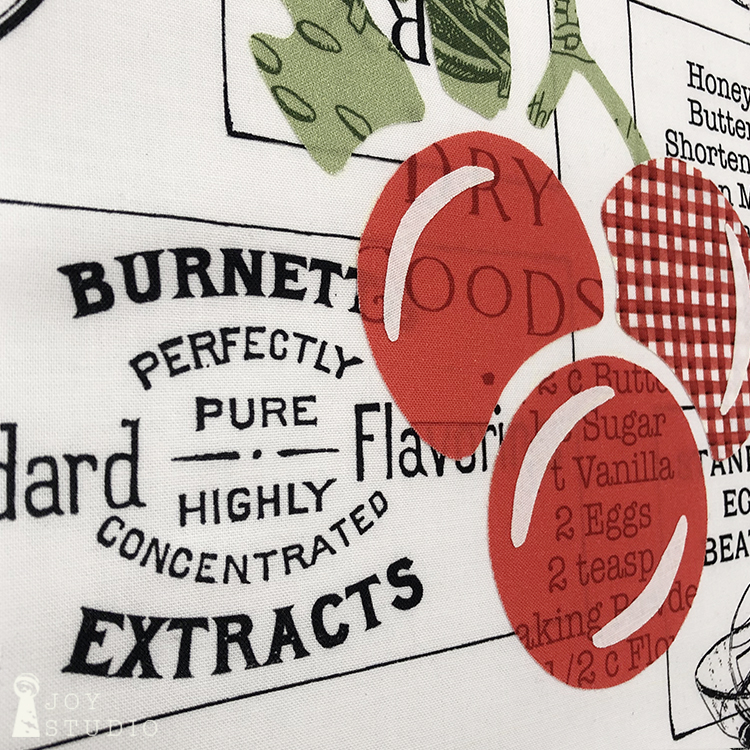
•
Announcing,
SWEET SNOW-A-LONG
July 23rd
made with
SNOW SWEET
fabrics from Riley Blake Designs!
•
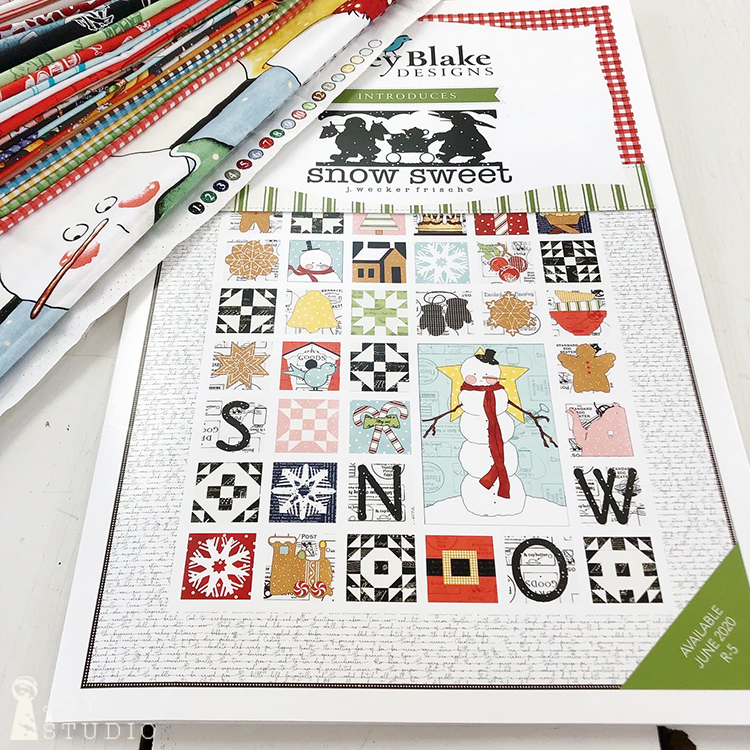
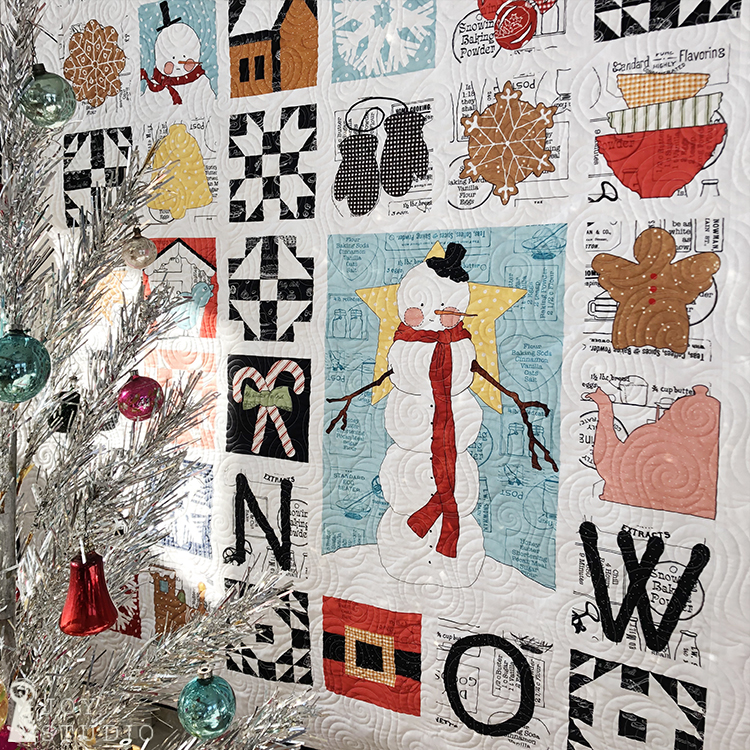

•
Follow us here at JOY STUDIO for each step over five weeks to make this delightful and delicious quilt top.
Patterns and fabric are shipping now so check with your favorite shop for arrival times. MANY shops have ordered this so patterns, kits and fabric should be widely available.
If your local is still closed check the on line shops. Search Snow Sweet fabric and Sweet Snow-A-Long.
•
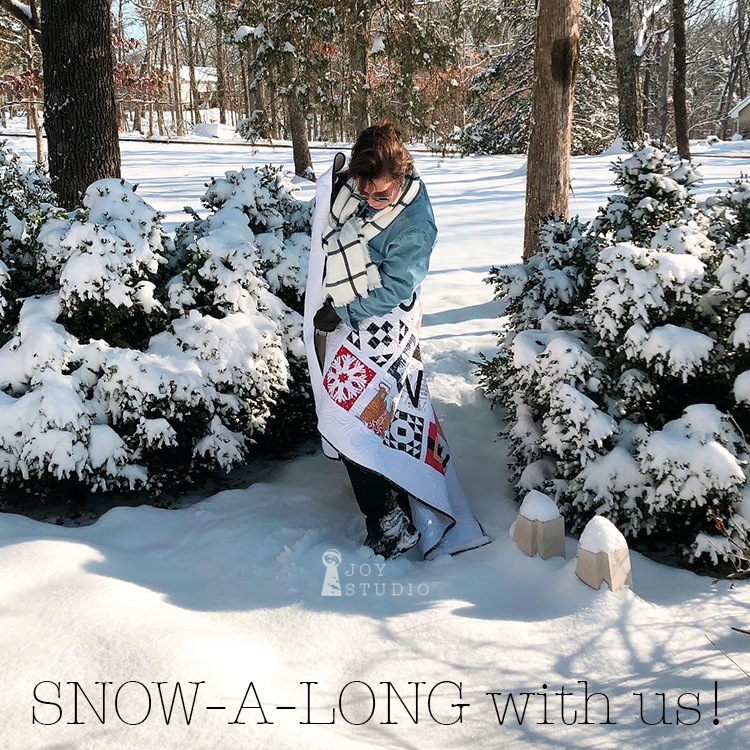
J. Wecker Frisch
•
Anyone can make this. We know because WE DID!! Lol And as you know, we are still new at this. I hope you can join us to make this really fun snowy quilt and cool off your summer!!!
by Great Joy Studio | Feb 4, 2020 | Quilting & Fabric
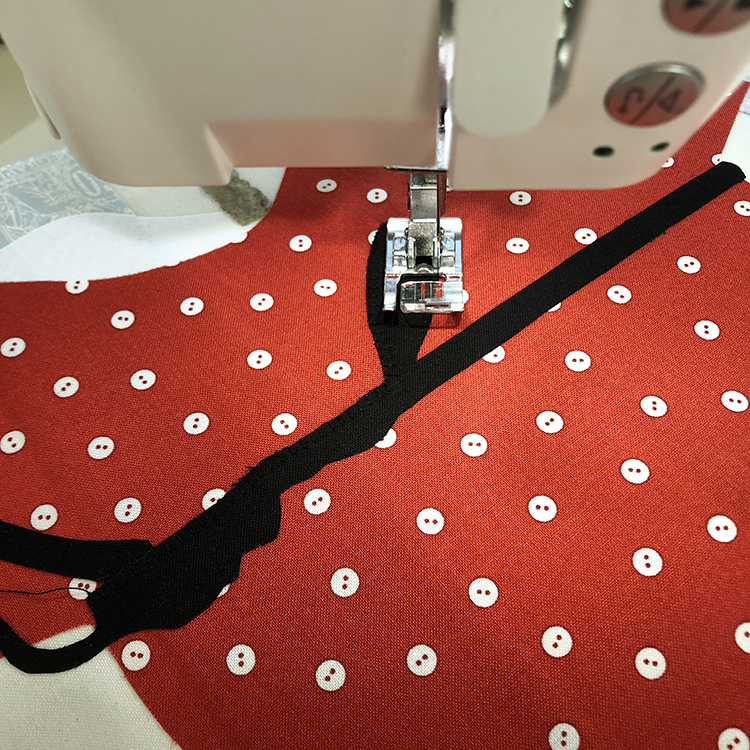
Again welcome to the Hat Shop Sew-A-Long!
Picking up from last week,
Sewing the details.
As I shared in week two, if you want to add decorative stitching and other trims to enhance each block, you may want to do that before piecing all four blocks together for easier turning. Whether you already assembled your top row before placing the text or not, either way is OK. I still have only fused and stitched down the red hat pieces. We will be stitching the remaining eight applique blocks in their entirety before assembling each row.
•
Pattern correction, derby wooden hat form applique should be extended to the hat brim, as if to appear going up into the hat. I marked the pattern with red dashed lines in the photo below. Also, the bottom of the rose needs to move up to be even with the hat band also indicated with red dashed lines. See third photo:

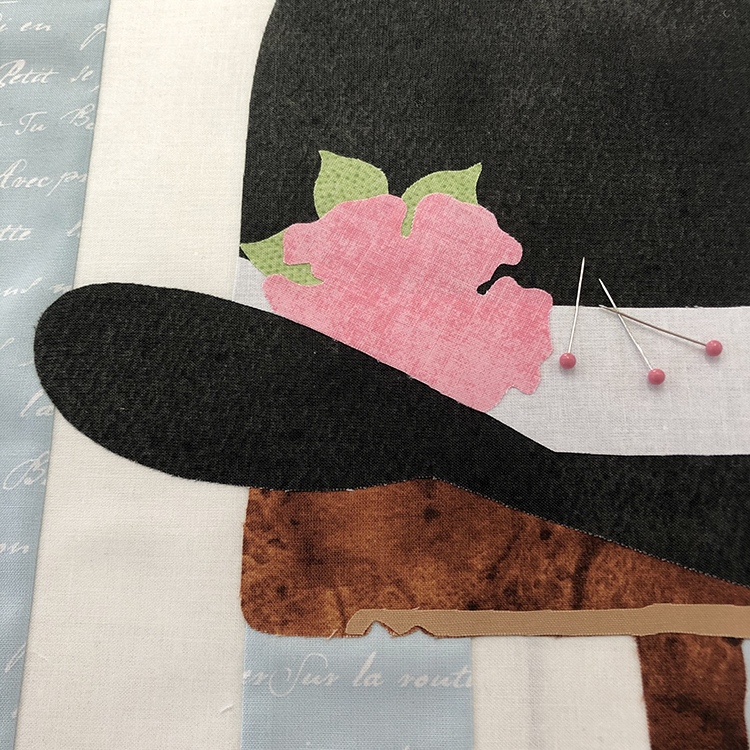
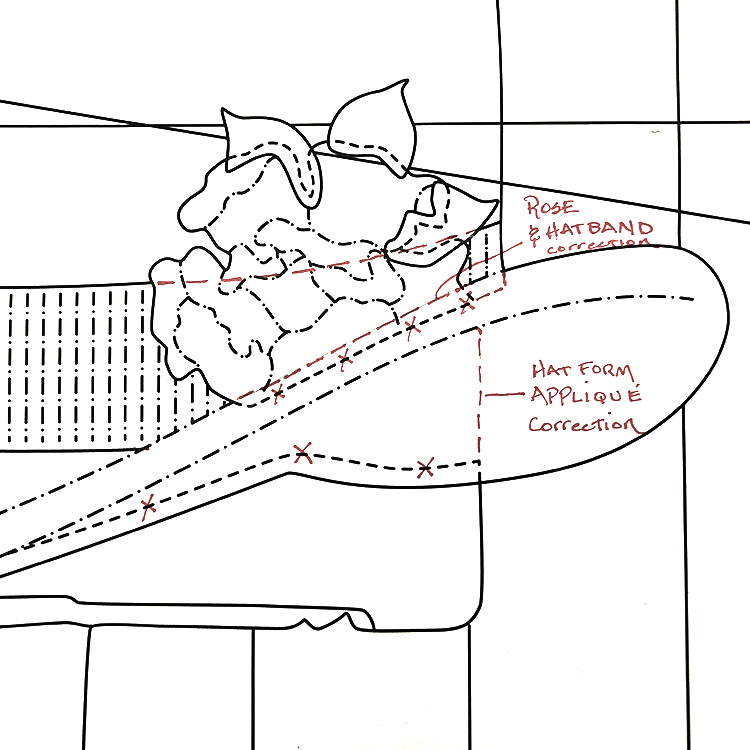
•
This week, fusing row 2.
Lining up the vertical stripes.
If you have a pieced background the most important thing to check in starting row 2 is matching up your vertical stripes! So, before pinning or fusing, match your stripes using your traced block patterns described in week 2, Making an appliqué placement door. Most likely, your stripes will not match the patterns stripes exactly. Mine did not, but were close. As long as you keep the second and third row consistent with your blocks in the previous row, then placement should match up. See below that my blue stripes are slightly to the left of the traced sheet in all three rows/photos. Next we will be using our tracings and placement door, for each of the four blocks in row 2, repeating the same steps as we did in row 1.
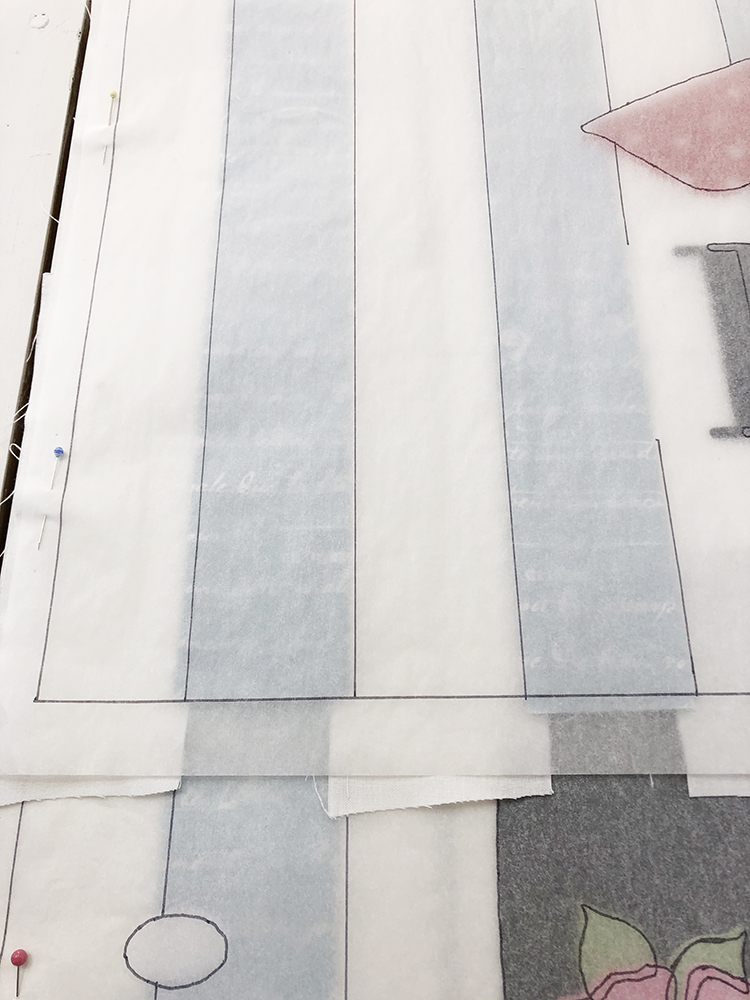
Block 1, Row 1
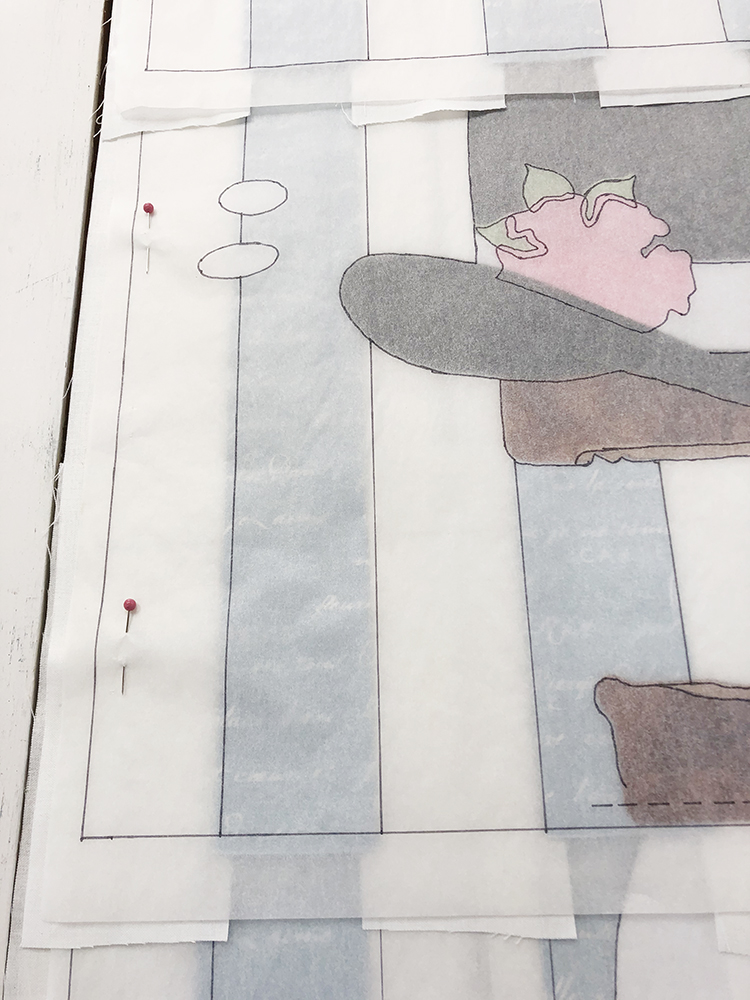
Block 1, Row 2
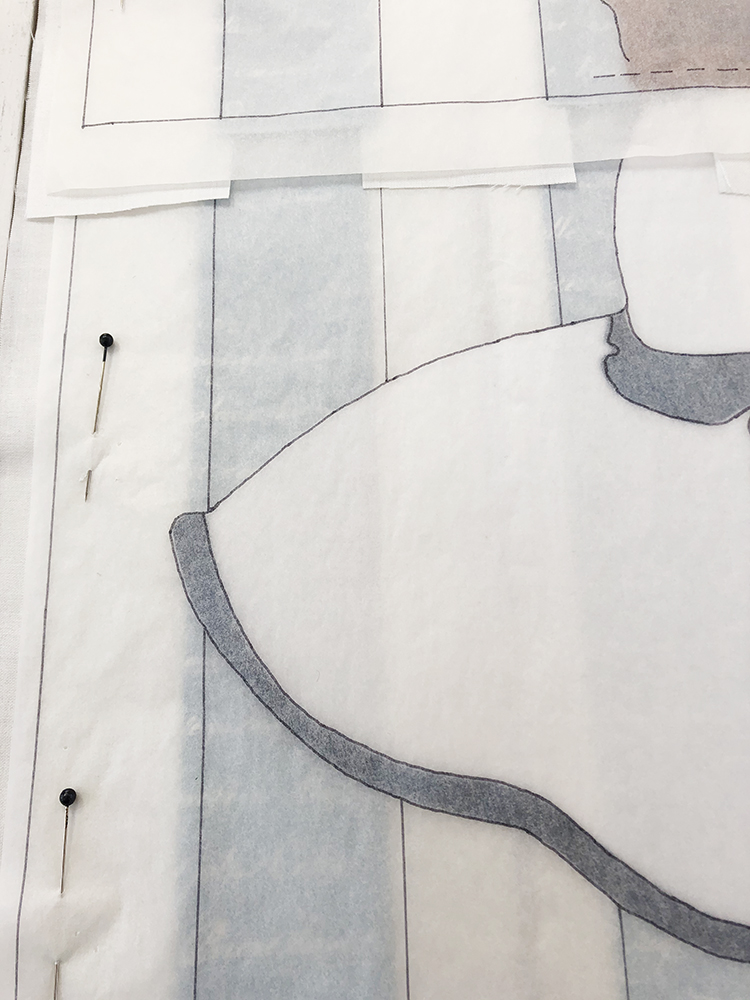
Block 1, Row 3
•
Applique fusing sequence.
The best way to determine what is fused first is by laying out all of your appliqué pieces on their corresponding blocks, carefully checking with your pattern cover and technical illustration. Much like the red hat described in week 2, the majority of the hats are fused in a similar order.
For example the derby:
vertical stand post,
stand base,
derby,
hat form,
band,
leaves,
and then the rose.
•
Hat number 3
I chose to use Couturiere Parisenne from Riley Blake Designs, red bold text rather than attempting the red stripes on hat three with my limited sewing experience. Letting the fabric do the work for me while still offering a similar visual impact was a lot less intimidating for me, a novice.
Secondly, we used an interfacing in between the applique and the fusible web to help hide the background for all of the white hats. We used Pellon 911FFW1. As you can see, my stripes are still visible so you may want to choose something heavier for a total mask.
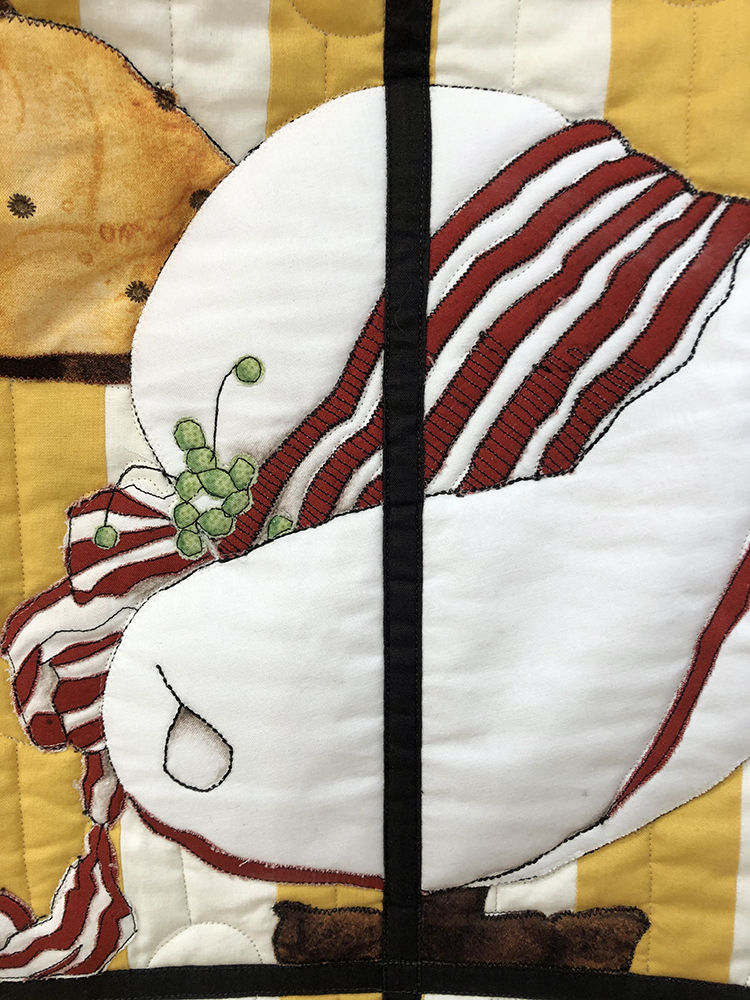
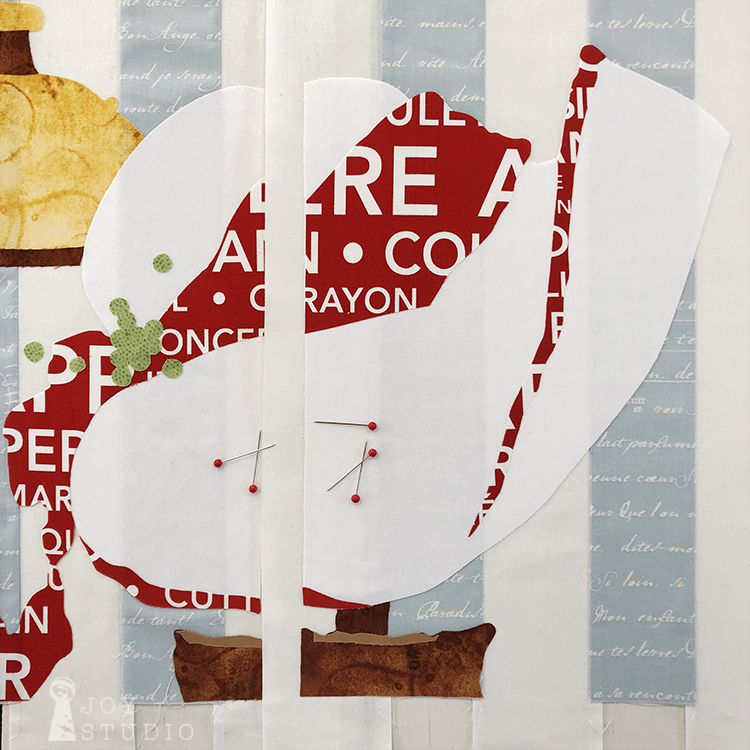
Appliqué Fabric Option
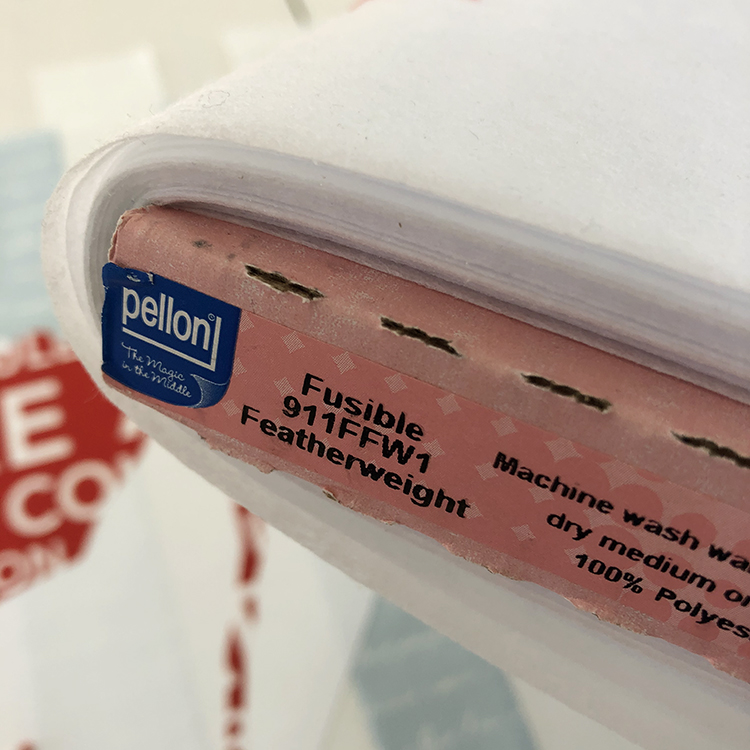
•
Once everything is fused in row two, you can begin the decorative stitching. Take your time, have fun. This part is where you can really get creative! Again it’s always a good idea with fusibles to at least secure your appliqué with some stitching.
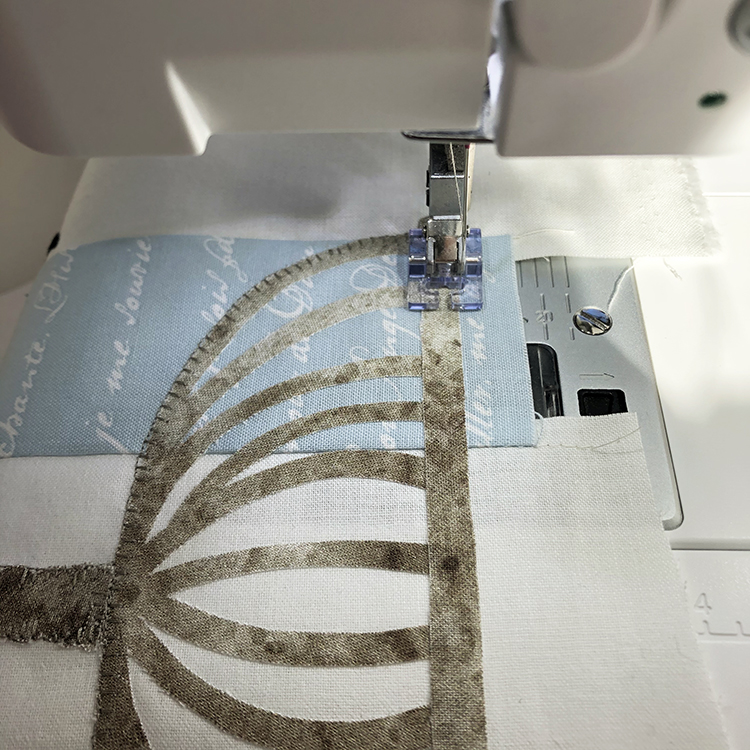
•
We will plan to assemble all blocks after rows one, two and three are fused and sewn down.
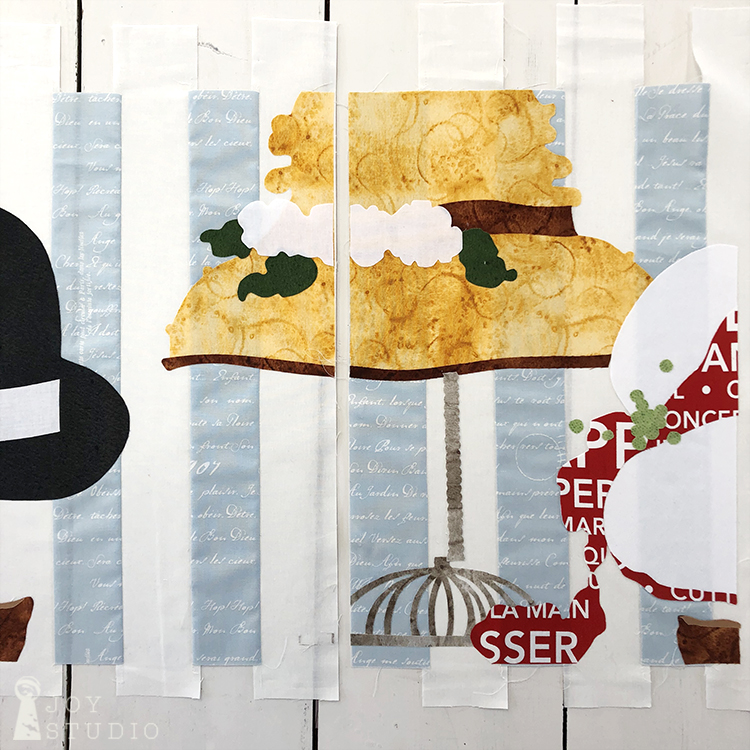
•
Please forgive me, we did not forget last Saturday’s giveaway, only postponed. We’ll keep you posted.
Stay tuned to Instagram and Facebook for additional news and hat shots.
by Great Joy Studio | Jan 22, 2020 | Quilting & Fabric
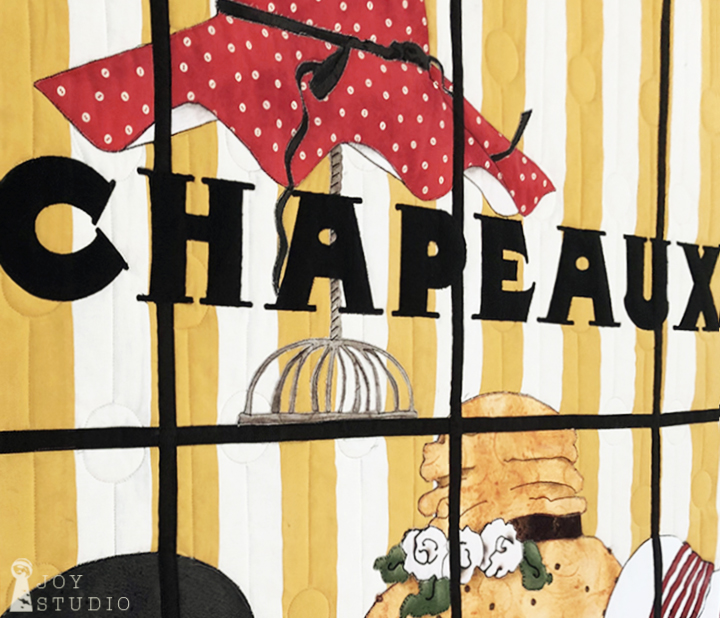
Hat Shop Sew-A-Long begins today!
What better way to start off than with a blog follower’s GIVEAWAY! We have a bonus hat plus some fun sewing related add on-s for this project that were included in the original art but are also cute stand alone-s. Oh, and did I mention, we are including some of my new fabric fat quarters to that!! Chances are if you are participating in this Sew-A-Long, you are already following here, on the Joy (blog) Journal. If not, simply click on the subscribe button above right if you would like to enter for a chance to win the bonus pattern. Follow us on Instagram too for another chance with a comment tagging a friend. @jweckerfrisch You can still enter by subscribing even if you are not participating in the SAL.

•
As you read in the previous announcement post, I am sharing my art that we have translated to appliqué design. Please know that I am not a qualified expert in sewing technique and/or quilt assembly. I wanted to remind everyone of this up front. This is my first time making the project also, together with you. It is the 5th quilt I have pieced! One of them was “doll” size too so, I’m not sure that one even counts. The encouraging news is, that even a beginner like me can make these charming appliqué blocks and have fun.
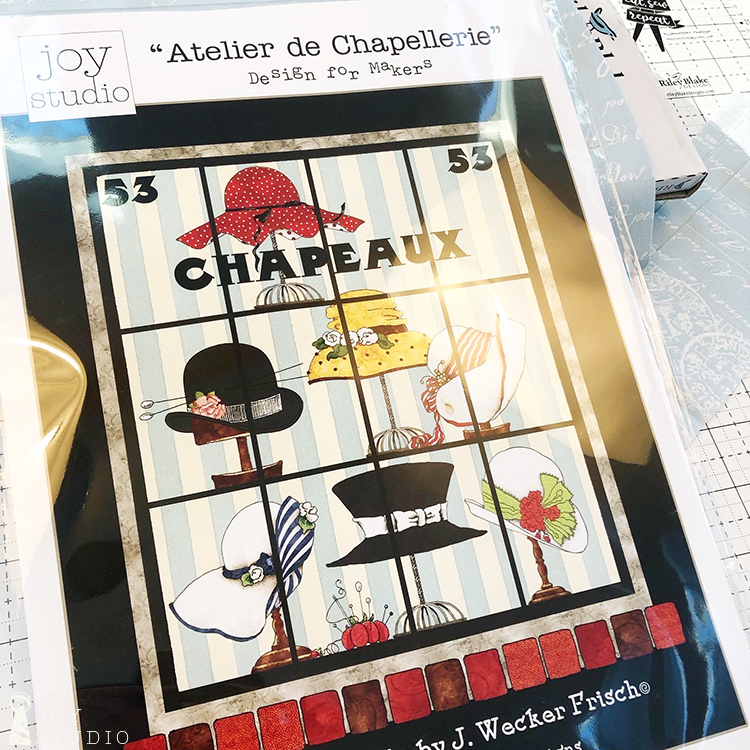
•
Raw edge fused appliqué is the method that works best for my very detailed images and one I am most comfortable executing. Our pattern was designed to work with this technique only, although you can certainly add an allowance to create turned appliqué if you choose. I am still learning so please feel free to comment any tips, questions, or critiques below or email to janet@greatjoystudio.com. I’ll do my best to address them all.
•
OK, let’s get started!
We will be making the 12 blocks that make up the window background in the main body of the quilt this week. First decide if you want a striped or solid background. We chose to make a striped background using Couturiere Parisienne light blue text (#C8850-BLUE) and Confetti Cottons vintage white (#C120), both from our fabric partner, Riley Blake Designs. As indicated on the pattern, you will be cutting equal number of 2.5″ x 18″ (or longer) strips from both, for a 2″ x 17″ finished size, 1/4″ seam allowance. If you choose a directional fabric as we did, you will be cutting your strips parallel to the selvage.


•
Some of the blocks begin with a light strip and others begin with a blue and in several blocks, the stripes overlap! As you can see in the photos below, we flipped the pattern over and taped all four blocks in the top row together, matching the horizontal dashed seam lines, to our window in order to view the pattern lines as they will appear. Then we marked the darker stripes with a highlighter for an easier visual reference. The top row then will be your guide as you work vertically for the next two rows of blocks.

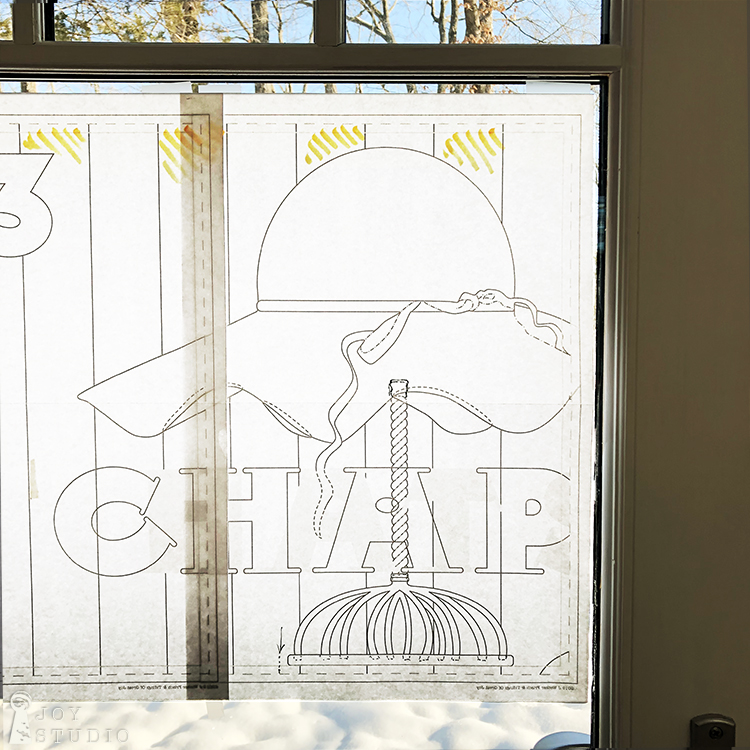
Strip Background Piecing Tip:
I learned the hard way that you will want to stitch each of the strips together from alternate ends of your block. As you can see, I started each strip at the top and my first 3 blocks had a distinct curve to them.
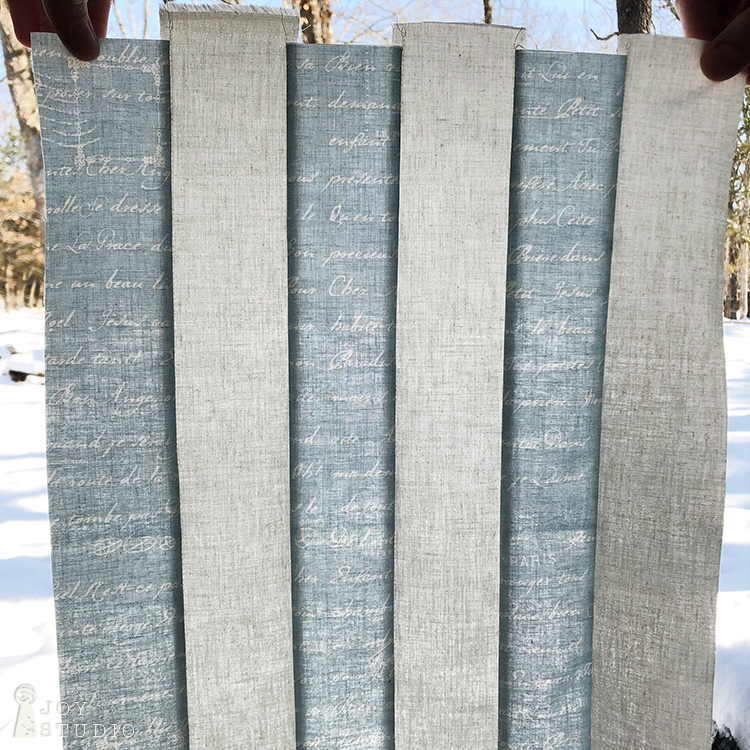
Once you have all of your blocks made, you you are ready to start on you appliqué pieces.
Choosing Fabrics
Pattern correction, not listed is yellow swirl (#C8945-Yellow). You will need a fat eight.
On the back of your pattern in fabric requirements is a list of Riley Black Designs fabrics used for each hat as they appear top to bottom, left to right. You can also reference the picture (worth a thousand words) on the front cover. Our Painter’s Palette Collection from Riley Blake Designs include a wide range of colors, values and artful textures to create from when you want to achieve an interesting watercolor look. I plan to keep plenty on hand to use with former and future projects.
•
Making Your Raw Edge Fusible Apliqué Pieces
Begin by tracing your appliqué pieces onto your choice of fusible web product. We used Pellon 800. The pattern is already in mirror image so trace each appliqué piece from the printed side of your pattern. With so many similar pieces, it is very important to mark each one with a system you will remember. We chose to use the row and block numbers. Once traced, rough cut your fusible pieces.

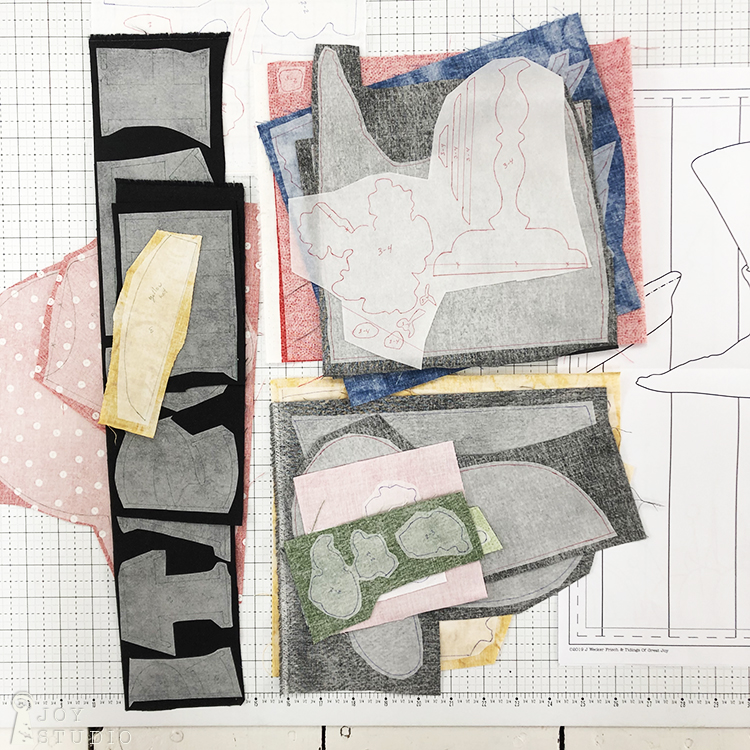
•

•
Organize them on the appropriate block. and you are now ready to fuse!
See you next Wednesday for further fusing instructions.
•































































